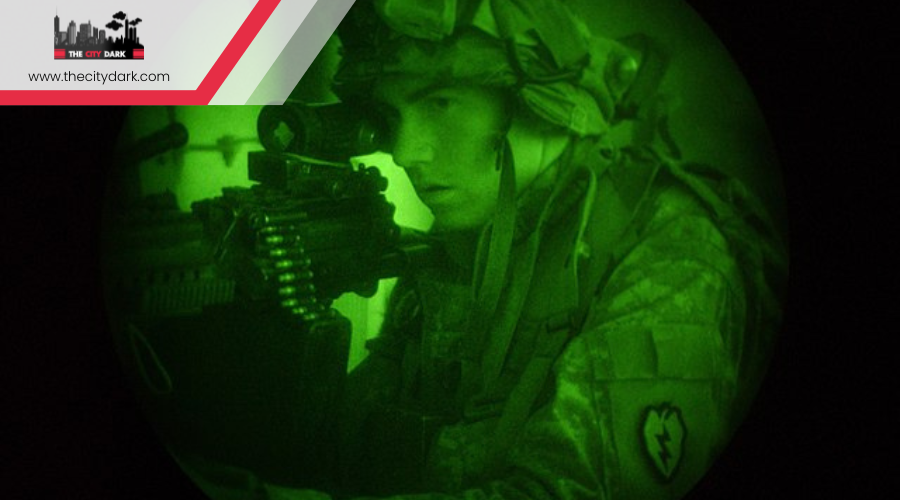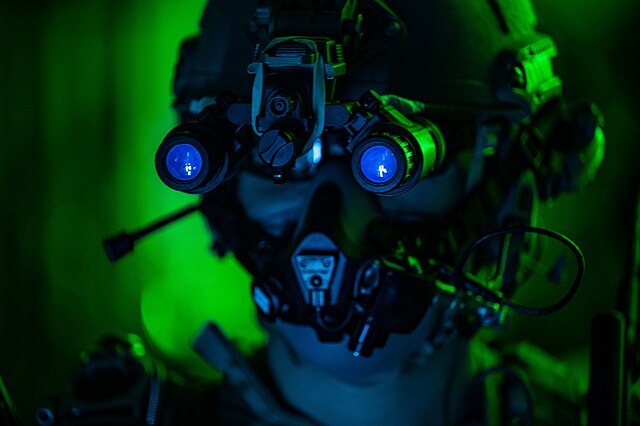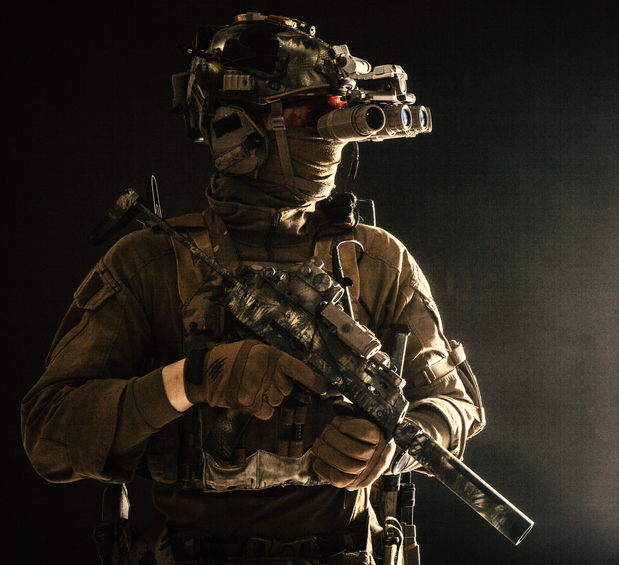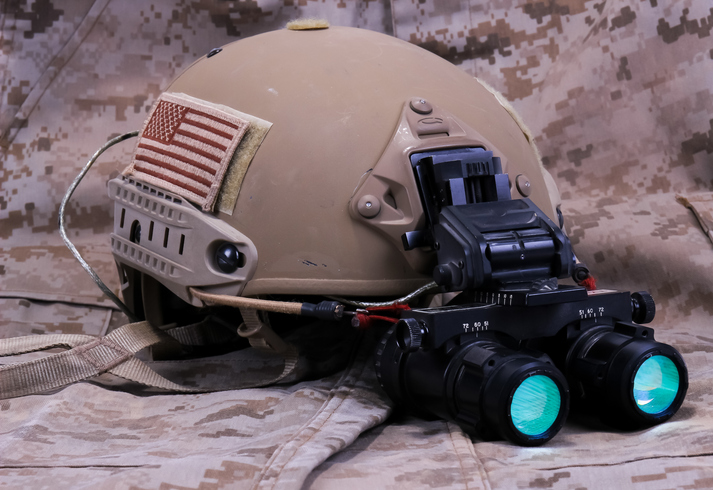Night vision is crucial for modern law enforcement. It allows clear sight in darkness, enhancing safety and effectiveness. With it, officers can spot dangers early and navigate perilous situations confidently, serving as an additional set of eyes. Essential for covert operations, it enables discreet identification and monitoring of targets. In search and rescue missions, night vision aids in swiftly locating victims and navigating challenging environments. It also improves evidence gathering in low light. Night vision significantly boosts the ability to operate undetected, marking a significant advancement in law enforcement capabilities. Much remains to be explored about its transformative impact on law enforcement tasks.
Key Takeaways
- Night vision boosts officer safety by making threats visible in the dark early on.
- It lets officers watch closely without being seen.
- Night vision speeds up finding people in the dark during search and rescue.
- Infrared cameras capture clear evidence in total darkness.
- It aids stealth tactics, giving officers a way to move and understand their surroundings quietly in low light.
Night Vision Fundamentals
Grasping night vision technology matters greatly for those in law enforcement, as it boosts ambient light, ensuring clarity in sheer darkness. This tech is more than merely brightening the night; it’s a refined instrument that sharpens your sight while keeping you unseen. By elevating even the faintest ambient light, night vision gadgets let you clearly understand your surroundings, even when darkness blinds the naked eye.
The intrigue deepens with night vision’s utilization of infrared light, stepping beyond mere light amplification. This shift isn’t just about improved night vision; it’s about perceiving the invisible. Infrared light, employed in tools like the Steiner SPIR illuminator, works as a flashlight visible only to you. This is crucial for keeping the upper hand during surveillance or hidden missions.
Night vision arms you to identify, follow, and document actions discreetly. It transcends mere darkness navigation; it amplifies your operational skills while safeguarding your safety. Night vision, especially paired with infrared light, proves essential in your duty to protect and serve.
Enhancing Officer Safety
Night vision technology boosts your safety by letting you see in the dark, cutting down on accidents and injuries. You’re no longer moving blindly; you see clearly what lies ahead. This technology doesn’t just help you avoid tripping over things; it helps you spot potential threats early, keeping you safer. With this visibility, you can move through risky places more confidently, always staying one step ahead.
Additionally, night vision greatly improves your awareness. It’s as if you have an extra pair of eyes that can see through darkness, warning you of dangers you’d miss otherwise. This ability to detect threats early is crucial for your safety and for those around you. It’s not only about identifying threats; it’s about fully understanding your surroundings.
Tactical Advantages Gained
Night vision integrates with IR illuminators and communication devices. This isn’t merely about observation. It’s about discreet coordination. Officers control situations, guiding actions without sound or light. In darkness, they lead, illuminating the path forward.
Surveillance and Reconnaissance
Night vision ensures officers can see, not that they’re blinded by darkness. They identify suspects, not miss them. This advances law enforcement operations.
Stealth Operations Enhancement
Using night vision, law enforcement can conduct covert surveillance and reconnaissance effectively. This technology provides a high level of stealth and precision. Infrared features give officers an advantage in dim conditions.
Consider these scenarios where night vision is crucial:
- A SWAT team moves silently in complete darkness, coordinating without noise.
- Detectives watch a suspect’s hideout from afar, collecting important evidence in the dark.
- Officers employ the Steiner SPIR illuminator to highlight an area, remaining unseen.
Target Identification Accuracy
Night vision technology sharpens target identification in surveillance and law enforcement. It lights up low-light scenes, letting officers spot individuals and objects clearly. This clarity separates threats from bystanders, enhancing critical decision-making. Night vision delivers crisp images, making identification exact. This precision cuts down on mistakes and boosts team effectiveness. Using night vision, officers enhance their safety and the community’s. It’s a crucial tool in today’s law enforcement.
Search and Rescue Operations
In search and rescue efforts, night vision is crucial. It lets rescuers spot victims in darkness, move safely over tough ground. This tech boosts success in hard places.
Enhancing Nighttime Visibility
Enhancing nighttime visibility with night vision tech boosts search and rescue. Law enforcement and rescue squads use night vision in dark places, saving lives.
- Night vision grabs tiny bits of light, like from stars or the moon, showing the surroundings.
- It lets rescuers see and find people in need in the dark.
- Teams push their search into the night, raising success chances.
Night vision isn’t just seeing in the dark; it’s about life-saving.
Accelerating Victim Location
Utilizing night vision aids, search teams swiftly find victims in the dark, speeding up rescue. This technology, amplifying minimal light, is crucial for nighttime searches. It enhances sight, improving search speed and success. With night vision, teams cover more area quickly, boosting chances of finding victims fast. This technology’s accuracy in spotting victims ensures rapid, precise rescues, saving lives.
Navigating Rough Terrain
Night vision technology revolutionizes navigating tough terrain during search and rescue, providing unmatched clarity in dim conditions. With these devices, darkness no longer hinders; it becomes an ally, enhancing every move for safer, more accurate progression. Consider the transformation:
- Climbing steep cliffs becomes less daunting, with each nook and cranny lit up.
- Walking through dense forests at night becomes simpler, as the undergrowth and barriers are easily seen.
- Crossing rivers and wetlands in the dark shifts from uncertain to assured, with the water’s boundary and dangers made clear.
These advances are crucial, not just for rescuer safety, but also for reaching those in need swiftly and effectively.
Evidence Collection Improvements
Infrared night vision police body cameras have changed how we gather evidence. They give clear, high-definition recordings, even in complete darkness. As law enforcement, you know collecting good evidence is key to a strong case. Thanks to infrared technology, darkness doesn’t limit us. These cameras see every detail, making sure we miss nothing.
| Benefit | Description |
|---|---|
| Better Detail Capture | They record in high-definition, catching crucial details. |
| Works in Complete Darkness | No need for extra lights. |
| Keeps Privacy, Follows Rules | They help us edit and keep records right, by the law |
Training is important to make sure we use these cameras right, respecting privacy. Clear rules on editing and keeping videos help protect identities and follow the law. As we use these advanced tools more, gathering evidence gets better, letting us look at incidents closely and correctly. It’s not just about more evidence; it’s about better evidence.
Infrared Technology Explained
Night vision revolutionizes law enforcement operations in darkness. Let’s explore infrared technology, the foundation of superior night missions. This technology enables not just visibility in darkness but also stealth, providing officers with enhanced safety and capability.
Infrared Technology Basics
To really understand the edge night vision gives to law enforcement, it’s essential to get the basics of infrared technology, which boosts faint light to make clear images unseen by the naked eye. Here’s the simple breakdown:
- Infrared technology turns invisible light into visible images.
- Devices like the Steiner SPIR IR illuminator use this technology, letting only the user see its light.
- IR pointers on gadgets like the Steiner DBAL help officers quietly point out targets.
This knowledge lets law enforcement work unseen in the dark, improving their ability to watch, recognize, and follow people or actions secretly. Infrared technology in night vision tools changes the game, offering a strong night-time strategy.
Enhancing Night Operations
Utilizing infrared technology, law enforcement boosts their night capabilities, achieving sight in darkness unseen. Infrared, amplifying light beyond traditional means, enhances vision in dim conditions. Invisible infrared suits covert surveillance perfectly. Devices like the Steiner SPIR illuminator emit infrared light, seen only by its user, supporting undercover missions. With night vision, officers discreetly observe and record, improving situational awareness. This skill grants law enforcement unseen presence in the dark, a crucial edge for tactical superiority. The invisible cloak of night vision ensures law enforcement remains undetected, always one step ahead in the night’s silence.
Night Vision in Aviation
Night vision technology dramatically improves how law enforcement officers operate from the air, offering unmatched clarity in low-light conditions. By utilizing Gen 3 aviation night vision goggles, these officers gain the ability to navigate the skies safely and effectively, transforming night into day. These goggles boost ambient light significantly, turning the invisible visible and changing how aerial law enforcement tasks are approached.
Consider these scenarios where night vision in aviation is crucial:
- Chasing a suspect vehicle from above: Enhanced vision from night vision goggles allows officers to follow movements without loss, even in poorly lit areas.
- Nighttime search and rescue missions: Finding missing individuals in challenging terrains becomes possible, as officers can detect life signs from the air that would be otherwise overlooked.
- Surveillance tasks: Secretly watching over suspicious activities becomes simpler when visibility isn’t an issue, ensuring officers maintain an advantage.
Using aviation night vision goggles in operations under low light not only boosts law enforcement effectiveness but also markedly raises the safety of both officers and the public.
Privacy and Ethical Considerations
Night vision technology boosts police work but stirs privacy worries and ethical debates. Its misuse in spying has set off alarms. In this era, every new tool brings questions about safety versus personal freedom. Strict rules and oversight are vital for dealing with night vision in police work. The challenge is balancing efficiency with privacy rights.
Night vision has clearly improved police work but also brought ethical questions about surveillance and privacy. It’s crucial to tackle these issues for its responsible, lawful use. People must call for a system that boosts safety but respects individual rights. Recognizing and addressing these concerns is key to keeping trust between police and communities, ensuring night vision’s use is both effective and ethical.
Future of Night Vision in Law Enforcement
Acknowledging the ethical and privacy issues raised, let’s delve into the future of night vision technology in law enforcement. The outlook is promising, with advances leading to significant changes. Here’s what’s on the horizon:
- Multispectral Systems: Envision officers using devices that offer a comprehensive view by combining thermal imaging, infrared, and more. This future vision, far from being mere fantasy, provides unmatched situational insight.
- Ultra-High-Definition Sensors: Imagine the night lit up with clarity, thanks to sensors that redefine resolution. By 2023, these advanced sensors will simplify the identification of suspects and the analysis of complex scenes.
- AI-Enhanced Vision: Think about incorporating artificial intelligence (AI) into night vision technology. AI will transform target detection, recognition, and identification, streamlining operations.
The development of lightweight and power-efficient devices will allow officers to move faster and work longer, altering the landscape of law enforcement. The future of night vision in this field is not just promising; it’s revolutionary, with continued investment ensuring that officers are equipped with the finest tools for the foreseeable future.
Frequently Asked Questions
How Does Night Vision Help Law Enforcement?
Night vision aids in conducting surveillance, stealth missions, and tracking criminals under cover of darkness. It allows for clear vision without compromising position, facilitating the undetected apprehension of criminals and ensuring team safety.
What Is the Importance of Night Vision?
Night vision lets us watch animals, improve star gazing, and stay safe camping. It helps us see in darkness, keeping us alert and secure outdoors.
Do Police Departments Have Night Vision?
Yes, police own night vision. It’s expensive. Training for equipment is crucial. Community opinions differ. Balancing budget and public view with safety and effectiveness is key.
Does SWAT Use Night Vision?
Yes, SWAT employs night vision for tactical maneuvers and missions. The cost of this gear is warranted by its critical role in achieving objectives. The public tends to see this as a stride towards improved policing.
Conclusion
Night vision is vital in today’s law enforcement, boosting officer safety and tactical effectiveness. It allows for efficient surveillance, reconnaissance, and search and rescue operations in the dark. Thanks to infrared technology’s progress, especially in aviation, these capabilities have expanded. Yet, it’s crucial to weigh these technological advances against privacy and ethical considerations. Looking forward, night vision will become even more critical in law enforcement tactics.




